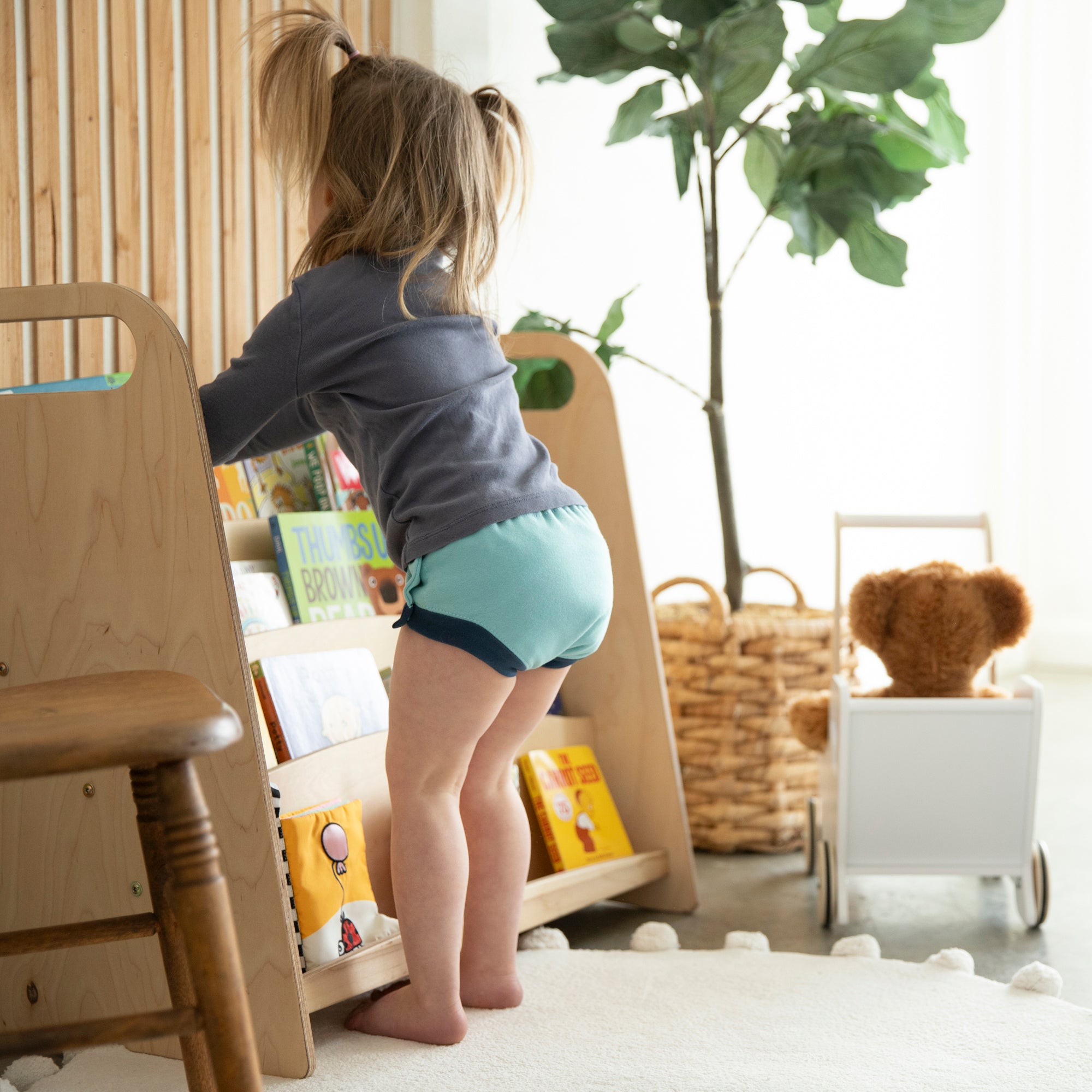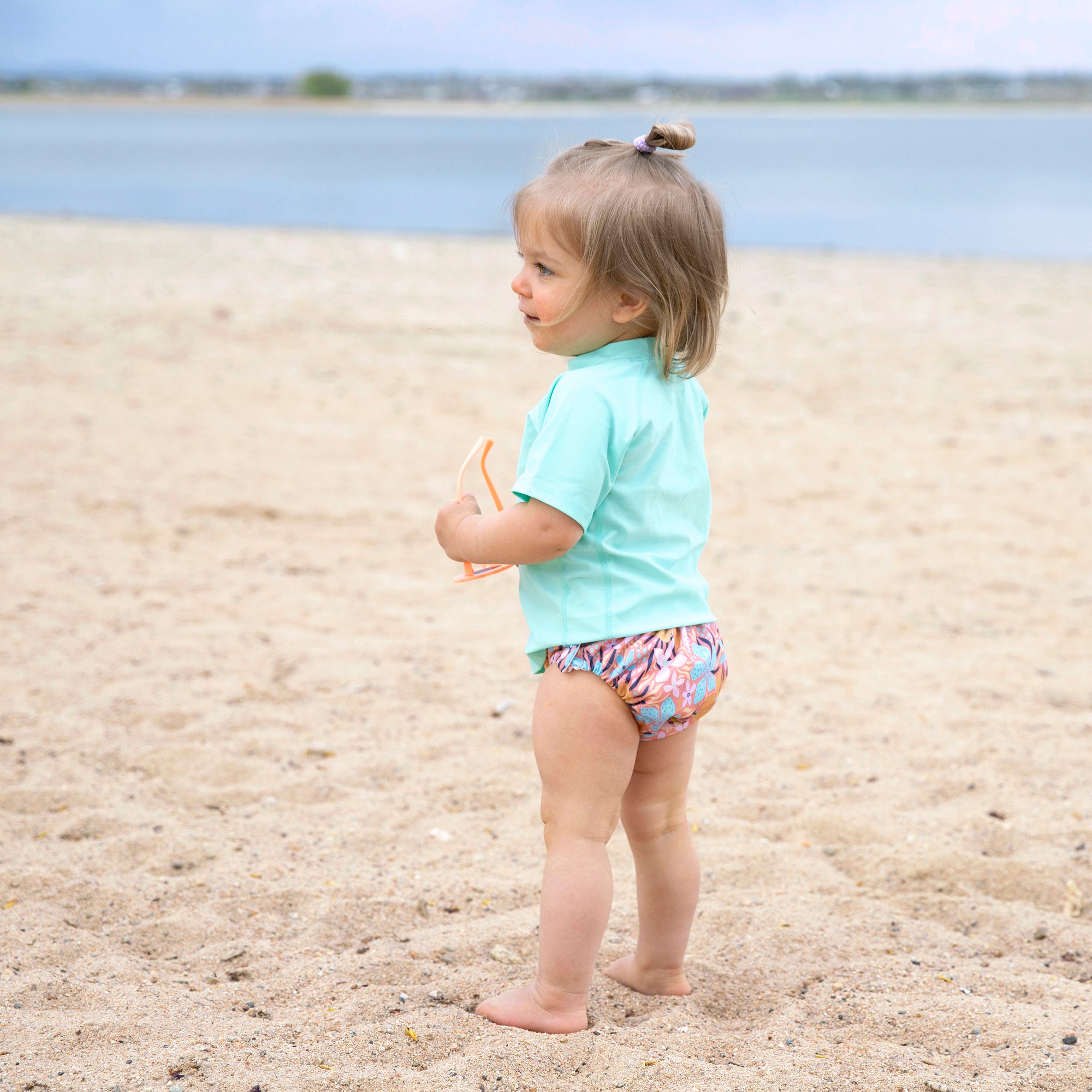Growing up in the seventies and eighties, disposable diapers were something that I took for granted. In the late 1940s crude paper disposables first made an appearance and in 1961 a major brand of disposable diapers was launched. Disposable diapers were originally made of paper pulp with a thin plastic covering. Over the past 50 years, disposable diapers have changed and evolved into what is currently on the market today. But what exactly is in these diapers? I was surprised when I found out.
Have you ever wondered what makes modern disposable diapers so super-absorbent? It's a chemical compound called Sodium Polyacrylate. This compound binds to liquids and can hold 200 to 300 times its weight, turning from a powdery substance into a gooey gel. It is also used in some potting soils to help the soil retain water. If you've ever changed a diaper and found small gel balls on your child's skin, it is most likely the Sodium Polyacrylate crystals. Have you ever seen a child who has gone swimming in one of these? It almost look like the child is holding a balloon between his or her legs and the diaper looks ready to burst. Sodium Polyacrylate crystals were once used in tampons until they were later removed due to their relation to Toxic Shock Syndrome.
The bleaching process also leaves many chemicals behind in the fibers of disposable diapers. Chlorine bleach leaves behind toxins called "dioxins.” Dioxins can cause problems in the endocrine systems (hormones) and are also carcinogens. Dioxins are found in many brands of disposable diapers and prolonged exposure to these dioxins may be related to infertility later in life. Certain cloth diapers may also contain trace levels of dioxins due to the bleach used to treat the fibers in the cloth, however these dioxins are washed out during the one to two pre-washes suggested before the baby ever wears the diapers. Babies wearing disposable diapers are exposed to these dioxins up to 24 hours a day.
Disposable diapers also contain chemicals and compounds that act as respiratory irritants that can cause asthma and asthma-like symptoms. These are toluene, xylene, ethylbenzene, styrene and isoproplybenzene. The rise of asthma rates and the introduction of certain chemicals and scents into diapers appear to be linked. Cloth diapers do not out-gas any of these chemicals. What's more, some diapers also use special dyes that change color to indicate that the diaper is wet and of course, plastics and adhesives are used to make the diaper tabs.
So are disposable diapers unsafe to use? Obviously many families use them and have no immediate problems--or at least none that they would think to link to the diapers they are using. The most serious health concerns linked to using disposable diapers don't occur until later in life--such as childhood asthma and male infertility. As for me, my baby is wearing cloth diapers and I'm glad I don't need to wonder what sort chemicals they are out-gassing or if he is absorbing carcinogenic dioxins through his tush. I feel good about that.
*This post originally posted on our blog on May 9, 2011.
OUR BESTSELLERS
Parent Tested, Baby Approved





We’re going to do everything possible to avoid disposable diapers. Mostly for economical reasons but also to avoid any of the toxic possibilities that lie within the disposable diaper. Thanks for keeping us informed!
SO much good info. Ive always wondered what was in a disposable and what made them so absorbent. This just makes me cringe to think that so many ppl dont know whats in them and dont even care. I know some ppl cant use CDs for different reasons but Im so glad im able to. thanks for the post!
Several times I have let my daughter visit grandma and she returns to me in disposable diapers (still working on convincing grandma of the wonder of cloth). I have noticed the little gel balls that stay on her skin after I remove the diaper.
We are choosing to cloth diaper our first (coming in July!), and this just solidifies that we are making the right choice!
I knew there had to be a lot of chemicals in disposable diapers. Very curious that there might be a link to asthma-causing chemicals… Asthma runs in our family, so anything we can do to not add to the likelihood of our daughter getting it is great!
You're viewing 16-20 of 20 comments